Don’t bet on a 2010 economic recovery. 10 stunning charts showing no housing recovery moving forward and weak employment growth. Employment, construction spending, commercial real estate, home prices, and consumer sentiment.
If the housing market is to see any sustainable growth moving forward we need to shore up our employment base. Fundamentally there has been a tremendous disconnect from measuring real estate growth and employment. This disconnect was the red hot fire that fueled exotic mortgage financing and led us into the biggest housing bubble the nation has ever witnessed. From 2000 to 2007 weak growth in the real economy didn’t stop housing from going up because lax lending and easy credit created a shadow economy based on funny money and neurotic real estate passion. It seemed like times were good but I’m sure a drunk also enjoys his buzz and isn’t thinking about the next day hangover. As of today, the entire housing market is being held up by a thread spun by incredible government intervention. When 95+ percent of all loans being originated come from Fannie Mae, Freddie Mac, and FHA insured loans you know this is unsustainable.
We’ve enjoyed a one year respite in the housing crash. Yet housing in many parts of the country is overpriced relative to local area incomes. I want to examine 10 charts that give substantive evidence that we are merely in the eye of the housing correction hurricane.
Chart #1 – Unemployment rate and labor force participation
It is often touted how great it is that the unemployment rate is falling. First, a large part of that has to do with massive government hiring. Next, a large part of the rate appearing better has to do with people simply dropping out of the labor force. The headline unemployment rate is 9.5 percent but if we count those unemployed and underemployed the rate spikes over 16 percent. Not only do we have an elevated unemployment situation, we have 40 percent of our country working in low paying service sector work. This doesn’t provide a solid foundation for growing housing prices let alone a bustling economy.  Keep in mind we need to add 150,000 jobs a month simply to keep up with population growth. Our economy faces challenges that rival those of the Great Depression. If the unemployment rate were dropping because of adding a good portion of non-government jobs then that would call for a champagne celebration. Yet calling it great news by massaging numbers is simply an exercise in self-delusion.
Chart #2 – Pending home sales
Given the weak employment situation, it should be no surprise that simultaneously the amount of pending home sales has collapsed to record levels. The jump you see above from 2008 to 2009 came from gigantic forms of government stimulus. The Federal Reserve purchased $1.25 trillion in mortgage backed securities. Why? No other investor in their sane mind would buy this. The Fed has also kept interest rates dangerously low trying to encourage additional borrowing. Alan Greenspan instead of confronting the real structural problems that came after the tech bust decided to take the easy road out and created a credit bubble and brought on a plastic recovery. We now know none of it was real in sense of it being sustainable. The above collapse shows the sugar high running out from the Fed and also the very expensive tax credits.
Chart #3 – Construction spending
As home sales jumped on a sugar high from government intervention, construction spending did jump up in the residential sector. How long will this last now that the government is pulling back? And in the more sensitive commercial real estate market, growth has contracted. This is a better reflection of actual demand because who is going to build a strip mall during a time that consumers are embracing austerity? The residential sector did go up but again, this was merely based on massive government intervention that has no guarantee going forward. All we did was pull demand forward for one year and operated on tax credit fumes.
Chart #4 – Hires and separations
As expected hires have increased in the first half but this is largely due to government temporary hiring. But look at the separation line above. People are hanging on with their clenched hands to their jobs (jobs that are largely paying less). Do you think these people are looking to buy a massive ticket item like a home moving forward? The above chart does a good job reflecting the psyche of workers. Confident workers are willing to leave a job to find a position that better matches their wants in a healthy economy. What the above shows is that people are holding on tight to their positions even if they are not ideal and fund their needs. It is all about needs today. With 5 unemployed workers competing for each single job opening you can tell why the above pattern is holding.
Chart #5 – Export prices
During the Great Depression import and export prices collapsed. During this globally difficult time we faced massive deflation. Last week we saw that the CPI went negative. The market is so tight right now that there is little pricing power for producers. Ben Bernanke gave a speech a few years ago where he outlined every way we can avoid deflation. He hasn’t been shy about keeping rates low and also offering quantitative easing. But this has only helped the banks and that is ultimately who the Fed works for. Americans as a whole did not benefit from this easy money. In fact, say you buy a home today with a low down payment FHA insured loan, are you confident that you will have the money to pay off that debt for 30 years? If anything, the decline in export prices shows that people are not confident about the future and are more concerned about the present. They are competing on a price level and that is why even with home sales, the large push has come from lower priced foreclosed properties. As time goes on we are looking more and more like Japan.
Chart #6 – Employment changes in big counties
Even though the stock market rallied in the last year employment has gotten worse. The stock market is largely an indicator of the casino that we now call Wall Street and really doesn’t reflect reality for most Americans. Look at the above chart. While the stock market was raging in 2009 many large counties saw employment contract severely. This was across the spectrum. You have your typical Southwest locations but also Texas. Recent articles have talked about how immune Texas is from the contraction. Just because you don’t have a housing bubble doesn’t mean you don’t have people that used the same credit cards and auto loans to purchase other items. We’re all in this together and Wall Street banks are the biggest winners with the stock market rally. How anyone can look at the above chart and say things are economically good is beyond reason.
Chart #7 – Commercial real estate
Commercial real estate (CRE) prices are down 40 percent from their peak from only a few years ago. There is no pricing power in this market. CRE has collapsed and is also guilty of large amounts of toxic high flying mortgages. This market isn’t going to collapse it HAS collapsed. The only reasons we don’t see the ramifications of this more visibly is because banks are using extend and pretend tactics while siphoning off money from taxpayers. The CRE market is enormous coming in with $3 trillion in loans outstanding. Many of these bad loans are sinking smaller regional banks (we are reminded on bank failure Fridays). The big banks have these as well but they have a money sucking hose to the taxpayer wallet via the Federal Reserve and every loss they face is already buffered by the majority of Americans. More and more the public is waking up and public sentiment is furious. At a certain point, there will be massive calls for action. You think the public is looking to bailout the CRE market? There is no political will for helping this bubble market. In the end, reality will come to the surface.
Chart #8 – U.S. home prices
The only reason that you see home prices increasing above from 2009 to 2010 is because of the government. From the previous charts, you can see that prices did not go up because of income and wages growing. This is merely a tiny reflection of easy money coming from the government. But even with that, you can see that prices are way down from the peak. The median home price is still down by over 23 percent from the peak. Why would prices go up if incomes are not? There is little reason to believe we’ll see any jump here.
And this chart is very important. I hear people talk about the 1970s and how inflation eventually brought the price of everything up including wages. Well there is absolutely no pricing power for wages in our current market because we have largely outsourced our manufacturing base. Working at McDonalds isn’t going to buy you a $175,000 median priced home. Has anyone looked at what people earn in China? The real estate cheerleaders make little attempt to connect macro level economic movements with what is going on with housing prices. The Fed is vigorously trying to inject inflation into the market. But most of the money is going to the banks! It isn’t making its way back into the real economy. What sectors are we seeing wage inflation in? Without that, good luck seeing higher home prices.
Chart #9 – Total U.S. debt
We have more total outstanding debt as a percentage of our GDP than we did during World War II. Think about that incredible fact for a moment. In addition, during the early 1940s we had massive pent up demand and wages because of the deep problems of the Great Depression. Is a war going to boost our economy? If you haven’t noticed we are actively in two wars at the moment. Plus, modern warfare doesn’t require troops that resemble the Battle of Philippi. It puts things into a precarious state because anyone that is honest realizes we will never pay our debts back. Why would a global investor put money into a company it knows will never pay it back in full? Yet we insist on more spending without actually getting money into the economy. If we really want to stimulate the economy take all the money given to the banks and build infrastructure. At least it’ll leave something for the country instead of filling up the funds in some investment banker’s offshore account.
Chart #10 – Consumer sentiment
You might have noticed that the casino had a bad end of the week. Apparently the public realizes how bad things are out in the real world. Most people (as measured by ratings) don’t watch CNBC and are glued to their ticker tape counting their stock market wealth. Why? Because most of it is concentrated in the hands of the top 1 percent but more importantly, most pay their monthly bills and commitments through their job. The vast majority of Americans simply want a job that allows them to cover the needs of their family. They don’t care that someone shorted a stock and made a billion dollars. The demands of their daily life are so removed from that nonsense. That is why the above surveys are still near their lows. People are simply not confident with a bad economy. Outside of Wall Street, Americans are still having a tough time.
In a way, it is something of a coincidence that the big movie out is Inception. I love the tagline:
“In a world where technology exists to enter the human mind through dream invasion, a single idea within one’s mind can be the most dangerous weapon or the most valuable asset.â€
Apparently some people were dreaming when they thought their most valuable asset was their home.
Did You Enjoy The Post? Subscribe to Dr. Housing Bubble’s Blog to get updated housing commentary, analysis, and information

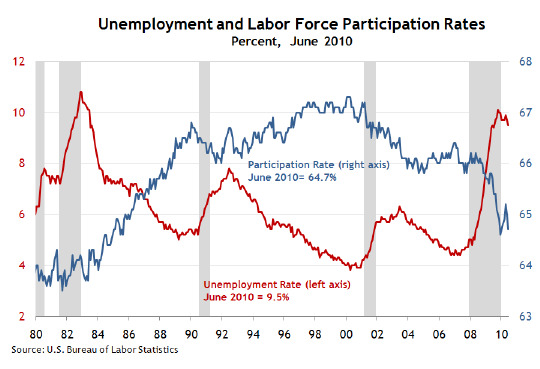
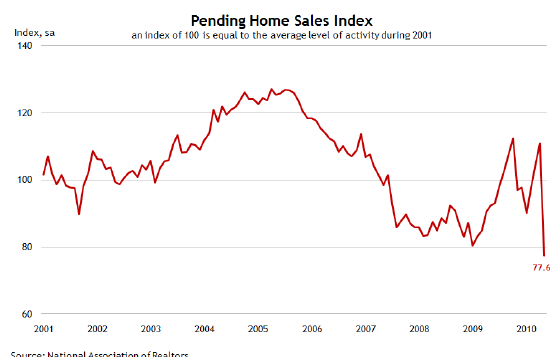
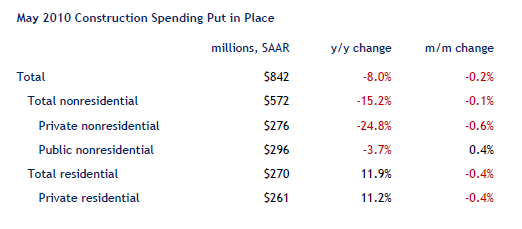
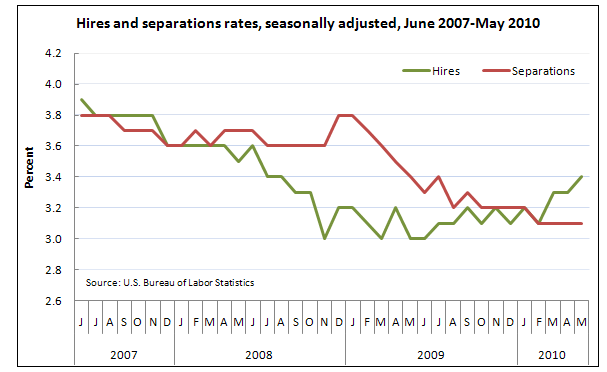
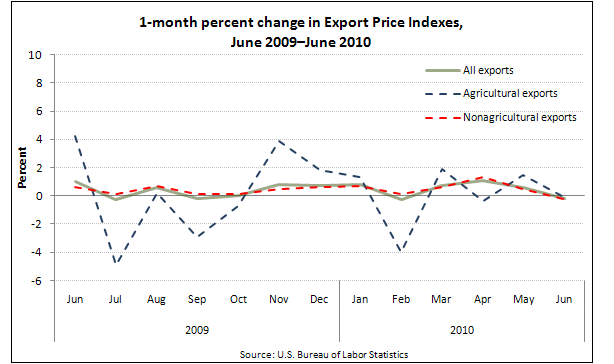
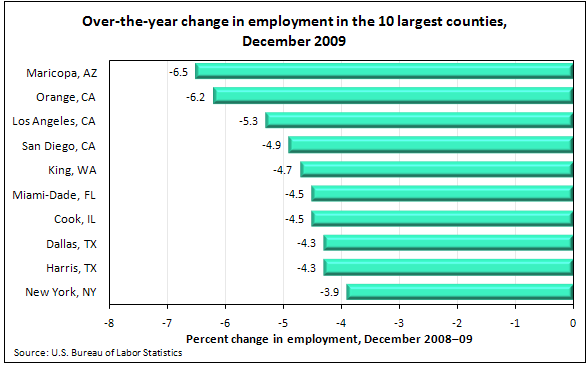
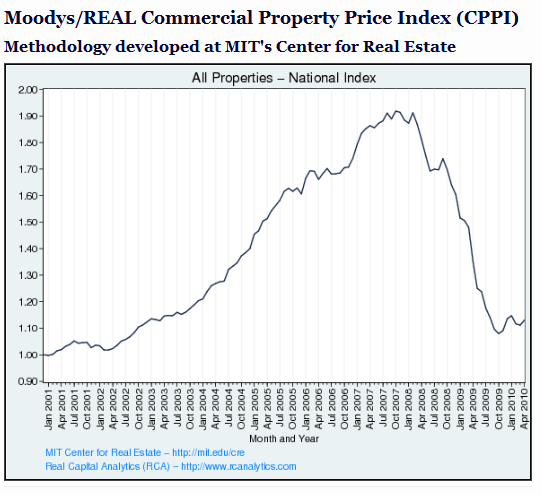
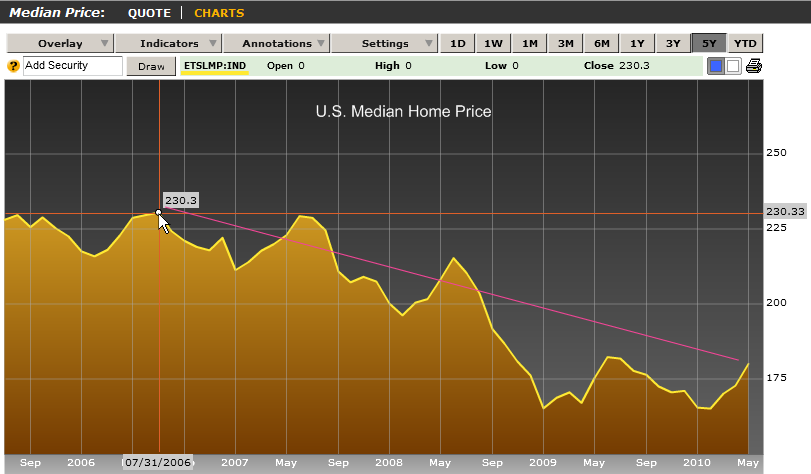
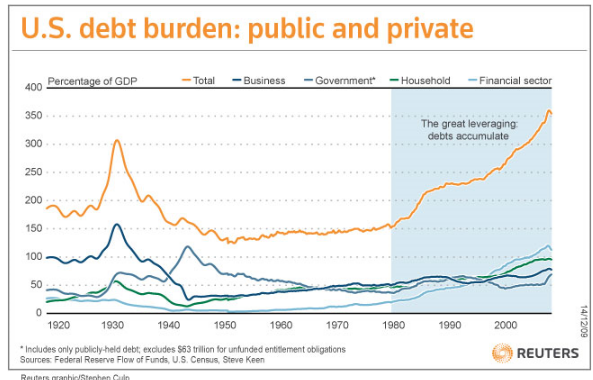
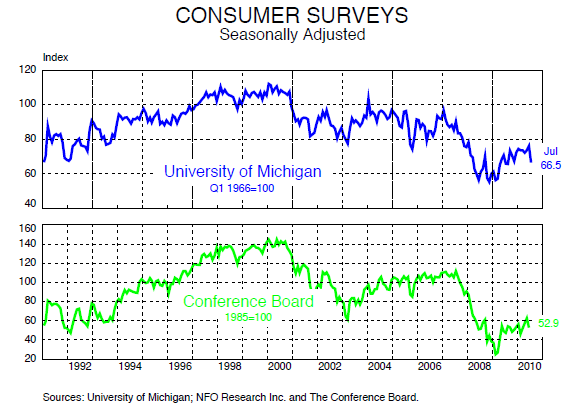
 Did You Enjoy The Post? Subscribe to Dr. Housing Bubble’s Blog to get updated housing commentary, analysis, and information.
Did You Enjoy The Post? Subscribe to Dr. Housing Bubble’s Blog to get updated housing commentary, analysis, and information. Subscribe to feed
Subscribe to feed






26 Responses to “Don’t bet on a 2010 economic recovery. 10 stunning charts showing no housing recovery moving forward and weak employment growth. Employment, construction spending, commercial real estate, home prices, and consumer sentiment.”
Obama and the Democrats will save us?
Dr. HB, thank you always….. Your info just make sense and easy to understand 🙂
Have a nice weekend 🙂
I think the facts here align with socionomics and a brutal wave of depression beyond which any living person has seen. We’ve gone so far in the wrong direction that there is no going back. Gov’t is still trying to double-down this losing bet that a fiat economy will sustain this standard of living we’re accustomed to.
The general work ethic of youth now scares me more than anything else though. Having grown up in oppulence and entitlement, the dissapointment of reality is more than our weak, fragile youth can handle. As Jack once said “You can’t handle the truth…”
Pull your money and invetments out of banks. They can make do with fake and fradulant government bailouts!
Personally, I know 3 people that have been out of work for over one and a half years. Two are college graduates. One has given up looking for work, so technically, is no longer counted as unemployed.
Few people alive remember the depression. It did NOT all happen in 1929.
The stock market crashed, then rallied, then crashed again, then rallied, and kept doing this for 4 years. The economy just kept slowly grinding down businesses,people, and optimism. Gradually, even the most optomistic people had to face the reality.
We are in the same situation again. This is a slow motion avalance, which eventually will bury many businesses, and people along with it.
All the happy talk will not change this. Hunker down, cut your expenses, cancel your cable, and pay off debt. This is going to get VERY,VERY bad.
Readers of this blog, for any length of time, saw this all coming (the crashing economy) YEARS in advance, and so did the readers of Calcualed Risk, in fact they’ve been joking about it for years now. But I really won’t believe any of this has reached any sort of tipping point until such time I can drive the 405 during the day and not be in horrendous, mind-numbng traffic. Should that day come, no one going to jobs that aren’t there, people giving up their cars, etc, I will finally believe the shit has hit the fan, until then we’re just the frogs in very hot water, but the water still ain’t boiling, The questioin is, will we jump out of the hot water, or just let ourselves be boiled to death,,,
and Dark Ages: “The general work ethic of youth now scares me more than anything else though. Having grown up in oppulence and entitlement, the dissapointment of reality is more than our weak, fragile youth can handle.”
Yes, and being obese won’t help the matter either….
@Polo – Friends have told me that their co-workers are reporting faster commute times all over LA. They attribute it to fewer cars on the road. Maybe it means fewer people going to work. Maybe it just hasn’t happened on the 405 yet, but maybe it’s because there’s always some sort of construction going on. I’m curious to know your observations on the effects of recession in LA.
@Dr – Inception was pretty good. Nice to see an original movie for adults during the summer and not one made for teenage boys. Overall, the acting was good, and the climax of the film was very unique. Chris Nolan both wrote and directed it. He’s pretty talented.
Right now, all the sheep’s don’t understand what will come to USA…..It will be United Social Armageddon, states are falling apart and something will come for us. Middle class will be wiped out completely and we will see only the super rich and the poor. That will be the USA coming decade…….
Re: the 405- I actually had friends from the north visiting last week. They reported they “flew” both coming and going on the 405, with no delays and average speed around 70.
You may get your wish.
@Polo,
You might want to get out of the American cocoon and see the rest of the world. Been to Manila? Bangkok? Cairo? These are all wretched economies and with far worse traffic than the 405 has. SoCal is now third world, and an economic collapse isn’t going to change that.
So if you think the coming tough times are going to deliver bliss on the roads…dream on.
This info correlates with Peter Schiff, Ron Paul, Gerald Celente, Nouriel Roubini, Max Keiser, and even Alex Jones.
SCARY shit.
Are they going to use the shock doctrine on us? Do we have to undergo an austerity program?
While I completely agree that we are on borrowed time here in the US, something BAD will give sooner or later…and I predict sooner. Most sheep haven’t got the memo yet, I still see fancy luxury cars everywhere, everybody has the latest gadgets and have noticed that restaurants are still crowded on the weekends (at least they are in the South Bay). While places like Riverside got economically gang raped, the nice areas (westside, south bay, coastal OC) are still holding up quite nicely. Is this the transfer of wealth we have been hearing about or will these high end communities buckle also?
~
The next decade will be very interesting (read scary), high unemployment is here to stay, many jobs are never coming back, every level of government is going broke, and the entitlement train with all the retiring boomers on board is speeding down the hill with no brakes. This is going to end BADLY. There is no easy way out this time. The bubbles of the last decade just postponed the inevitable. Plan for the worst and hope for the best!
As long as we have politicians(ALL OF THEM) and corporations that couldn’t give two shits about about this dead country we will continue the slow death. The only things different about this time and the great depression is we have two never win assinine wars, maxed out credit cards, soon to end unemployment ins., fiat money, and no law against shit complicated enough to make the so called educated elete go on to the next contrived crises. We don’t need foreign enemies—— we grow our own.
original
You may be right about some of the youth today, however, I know quite a few outstanding young folks that might be able look at you for the cause of all this. Be careful not to write off our future generations. These kids are obese because of the laziness of (and I’m guessing here) your generation. I’m sure your parents looked at your friends and said the same things to themselves. Let’s all look in the mirror and see what we can do today.
Dr. HB, I live in the Santa Clarita Valley, and I can’t believe what’s going on here. Prices here are going up! I search the MLS every day, and I am seeing homes that have gone into escrow and fallen out, re-list at a higher price. And some sellers are raising their price just out of the blue. The inventory here is very low. I guess that must be justification for price- hiking in the minds of sellers.
Govt debt is the final bubble. Govt intervention and spending is keeping the charade on life support. Although this could go on for 5 or more years, I think the tipping point will happen when the annual debt payment by the federal govt exceeds 30% of the annual budget. Which would probably put it at about 50% of tax revenue collected.
Dr.HB, Great Job! I’ll now be following you and offer these additional insights about how income disparity and how it works against economic recovery. NET: Without good paying jobs and discretionary income, who’s to buy the goods and services that the wealthy profit from? They’ll eventually need to address the disparity issue in order to keep growing their own incomes. Consider these stats…
Despite the economic crisis, the list of billionaires has grown by more than 200 and their aggregate capital has expanded by 50%.
In 1950 the ratio of the average executive’s paycheck to the average worker’s was about 30 to 1. Since 2000 that average has ranged from 300 to 500 to one.
Since 1980, the richest Americans have seen their incomes quadruple, while for the “lowest” 90% of us, incomes fell. The average wage today is lower than it was in the 1970s, while productivity has risen almost 50%.
According to Federal Reserve figures, real weekly wages in the U.S. rose until 1973, and have been declining since. From 1977 – 1989, the wealthiest 660,000 families gained 75% of “average pretax income” increases, while most middle income families saw only a 4% increase — and those in the bottom 40% of income had real declines. In 1990, the median income was $29,934; in 1973, it was $30,943 (constant dollars). Women in the workforce and an increased reliance on credit helped forestall lifestyle crashes, but that also got us into our current economic bind.
The average annual earnings of the top group increased from $315,000 to $560,000 in twelve years. An estimated 28% of the total net wealth is now held by the richest 2% of families in the U.S. The top 10% holds 57% of the net wealth. If homes and other real estate are excluded, the concentration of ownership of financial wealth is even more glaring. In 1983, 54% of the total net financial assets were held by 2% of all families, those whose annual income is over $125,000. Eighty-six percent of these assets were held by the top 10% of all families.
The award-winning documentary,“The Corporation†(http://www.homeownersoftexas.org/CorporateBehavior.html) offers more insight.
True story:
Haven’t gone to an open house, because I’m just too disgusted to even look at a real estate liar. But for some reason, this weekend I had a change of heart. I decided to step into one for my wife’s benefit. After casually browsing the property which was listed at $799K (in a beach community), my wife politely asked would the owner be willing to negotiate the price for a more realistic number. To which the agent gasped, “I just lowered the price this Friday from $945K”. He then stated, “I just sold a much smaller unit 3 doors down for $740K, and the couple financed with an FHA loan at 3.5% down. In fact, I’ve been giving out FHA loans on about 90% of the properties I’ve sold over the last few months.” ………Screeeech. Wait a minute did you say FHA loans? That’s my point. Without the new sub-prime, aka FHA, there’d be no upper tier market.
BTW, I replied, “Wow, I can’t believe they’re giving FHA loans out on $700K+, isn’t that risky?” To which he replied, “Nope, not if you’re serious about buying a home.” LOL
Get a clue Mr. 30-yr Beach City Agent!
We are seeing a pre-collapse false bounce due to the fact that there’s no risk built into bonds right now. Once the freakout in bonds happens and the bond bubble bursts…that’s all, folks!
” If we really want to stimulate the economy take all the money given to the banks and build infrastructure.” Tell it to the Japanese.
You know….I waited because I thought the downward slide would continue. But I had no inkling regarding just how corrupt and scummy the government could be. They’ve pulled out the stops to re-inflate the bubble. I hope that they all rot in hell.
Batcave,
~
I suspected this was the case also. My parents’ beachside community is the same way and I always wondered how people were finding $700k to plop down into a house that was worth half that a decade earlier. Now we know.
~
As a commenter said above, we’ll just have to wait for the last debt bubble to burst: that of our own government.
Will anyone comment on recent So Cal NoD trends published today? Not sure this is the right place for that kind of news…
@Harvey
Don’t worry about bonds. Bernanke will backstop them too. Moral Hazzard now means if you have any morals, it will be hazzardous to you. In fact, fed is just looking for more opportunities to reinflate as the quadrillion in world debt unwinds: http://www.elliottwave.com/freeupdates/archives/2010/07/12/Quadrillion-Dollar-Debt–Day-of-Reckoning–Looms.aspx
No matter how unlikely we are to make it to shore, we gotta keep swimming–there isn’t another choice.
I agree that we will not have a recovery in 2010 as we have reached “Peak Credit†….. and are about to enter “The End Of Creditâ€
Global debt deflation commenced on April 26, 2010 when the currency traders sold the worlds currencies, DBV, off against the Yen, FXY. This was just weeks after the Federal Reserve QE ended, and as the European Sovereign Debt Crisis was coming to a head.
Debt deflation is the contraction and crisis that follows credit expansion. One of the most famous quotations of Austrian economist Ludwig von Mises is from page 572 of Human Action: “There is no means of avoiding the final collapse of a boom brought about by credit expansion. The alternative is only whether the crisis should come sooner as the result of a voluntary abandonment of further credit expansion or later as a final and total catastrophe of the currency involved.â€
The greatest debt deflation came to the Russell 2000 shares, IWM, as these are dependent upon access to low cost credit which has not been available as the banks have not been lending and the European shares, FEZ, as these were impacted by the European Sovereign debt crisis.
As stocks, VT, rapidly fell in value, aggregate bonds, AGG, rose as a commonly perceived “safe haven†investment.
The apex in the chart of aggregate bonds, AGG, communicates†peak creditâ€; and that the “age of the end of credit†will commence soon.
Your presentation of the Reuters chart of Total U.S. Debt Public And Private showing US Debt to be 350% of GDP is helpful as it shows debt that can never be repaid. The chart shows a significant rise in financial sector debt especially since 2000 which when Wall Street financialization and securitization really took off due to the repeal of the Glass Steagall Act by a vote of 92 to 8 in the US Senate.
The US Ten Year note, IEF, is just now peaking; while the 30 year US Government Bonds, TLT, has peaked and is turning lower.
The yield curve, $TYX:$TNX, has been INCREASING, since April 26, 2010, because the 10 year rate has been falling faster than the 30 year rate.
The downturn in the 30 year US Government Bonds, TLT, should encourage institutional investors to go short the US Government bonds with the 300 percent inverse, TMV. When US Treasuries fail to auction, which will be soon, this will take off like a rocket greatly rewarding those who have invested in it.
Build America Bonds, BAB, show a topping out pattern.
Emerging Market Bonds, EMB, is peaking out.
Junk Bonds, HYG, is continuing upward.
The daily chart of high yield municipal bonds HYD Daily shows an awesome rise in high yield municipal bonds since April 26, 2010 … the weekly chart of HYD weekly shows that strong gains have been developing for a long time as investors have sought refuge from debt deflation destroying stock values.
Debt deflation which has been coming to stocks, will be coming to bonds as credit deteriorates. Very soon municipalities and states will be an epicenter of debt deflation, literally wiping out the value of HYD as the yield on HYD rises. Yes higher interest rates will come to this investment vehicle as credit ratings by the rating agencies drop, and as more and more cities and municipalities fail to make interest and debt payments because of revenue shortfalls.
Soon, municipalities will find themselves unable to borrow because interest rates will either be too high or the municipal bond market place will be closed because the US Treasury bonds will fail to auction. It is as Nassim Taleb relates: â€We Are Going To Have, At Some Point, A Failed Auctionâ€.
Government employees with their high pay and high pension funded jobs have multiplied in municipal, state and federal government, creating a pay disparity between private and public sectors as documented by MyBudget360.com
Andy Fixmer and Christopher Palmeri of Bloomberg report on July 23, 2010: “U.S. cities and states may need more than $1 trillion of federal assistance in the next three years to stave off financial failure, former Los Angeles Mayor Richard Riordan said. Local governments are in a ‘race to the bottom’ and U.S. taxpayers will inevitably be called on to bail them out, Riordan said … The federal government should make pension, health-care and school reform a condition of receiving the aid, he said. ‘It’s not just L.A., it’s not just California, it’s all over the country, you’re going to see all these entities become totally insolvent,’ Riordan said. ‘I think the federal government has to come in and have a list of what the states have to do to be saved.’â€
I see no chance, repeat no chance whatsoever, that the US Federal Government will come to the aid of municipalities or states. The money simply is not there, nor will it be there. We will soon see the end of entitlements – entitlement programs, with the exception of food stamps will be cut off.
The only monies flowing will be for strategic purposes. Austere sacrifices will be required for committment to President Obama’s International Order, that is the policy of global order of security and defense. GlobalResearch.ca reports the Xinhau news of July 17, 2010 that Canada is onboard for this endeavor as it plans to buy Buy 65 F-35 Lightning II Joint Strike Fighters.
The corporate bonds, CFT, have been driven up dramatically since July 14, 2010 due to the rise in currencies, DBV, and the rise in the US Ten year note, IEF. Higher interest rates across the board soon, will drive corporate bonds down and raise the cost of doing business at a time when corporate debt globally is coming due. This means many, many businesses will close and unemployment soar. Government finance ministers and state leaders will have no choice but to jointly announce austerity measures and bypass their national legislatures. Governments will become seignior, that is they will exercise seigniorage and become first, last and only provider of credit.
Interest rates are going higher soon for a number of reasons. One primary reason will be Treasury Auction failures. Soon, the interest rate will be out of the government’s control and they will no longer be subsidizing mortgage rates. Freddie Mac and Fannie Mae will not be funded as liquidity evaporates. Mortgages will not be offered by the GSEs or the banks.
If the lenders write down the mortgage debt to reach market values it will decapitalize them so severely that they will go out of business and the FDIC will not be able to close banks fast enough to keep up with the failures. Therefore, I see foreclosures (simply to get the people physically out of the house) and then the banks, Freddie Mac, Fannie Mae, and the US Federal Reserve leasing to someone who will pay rent. Perhaps there will be many people living in one property, that is multiple families, in violation of rules now existing in many better neighborhoods.
I envision, that out of the coming credit crisis, where there is no credit available, a Financial Regulator will exercise Discretionary Governance, and announce a Home Leasing Program administered by the banks on their REO properties and those of Freddie Mac, Fannie Mae and the US Federal Reserve.
As credit deteriorates, the value of excess reserves will rapidly decrease as well. Dr. Housing Bubble in article Japan Iwato And Heisei Stock And Housing Bubbles presents a chart of Excess Reserves totalling over $1 Trillion at the current time. These are largely the US Treasuries that the Federal Reserve swapped out to recapitalize the banks through its QE TARP Facility. The so-called excess reserves are residing at the US Treasury. As the value of US government bonds, IEF, and TLT, and ZROZ, falls lower, the value of the excess reserves will shrink dramatically in value, as either the banks pull them and sell to stay capitalized or simply “rot on the vine†so as to speak.
Utilities, XLU, have escaped debt deflation so far as dividend payment season approaches. And some utilities are paying exceptional dividends and it can be seen in their stock values soaring well above their April 26, 2010 values. Morris News Service reports that Southern Companies, SO, announced it is declaring a dividend of 45.5 cents per share, continuing an unbroken string of quarterly dividend payouts for more than 62 years. In April, Southern’s board of directors boosted the dividend rate 4 percent, the ninth year of steady increases. Southern’s dividend yield, the rate at which investors get a return on their money, is 5.14 percent. That compares to an average for the 15 companies in the Dow Jones Utilities Index of 4.4 percent.
The chart of these selected diversified utilities ED, WEC, NU, NI, WR, PEG, and LNT suggests these are approaching the end of their rise. The chart of ED shows a pop with lollipop hanging man candlestick. The chart of WEC shows an ascending wedge pattern. The chart of NU and NI and WR and LNT and PEG all show a double or triple top.
Institutional investors may want to consider investing in the Proshares 200% inverse of the utility stocks, SDP.
It is entirely possible, even likely, that stocks, ACWI, will fall lower as bonds, AGG, lose value. Institutional investors should consider the Morningstar report that The Profunds UKPSX, 200% short Japan, and the Direxion DXRSX, 200% Small Caps have been a consistently good performing bear mutual fund.
Leave a Reply